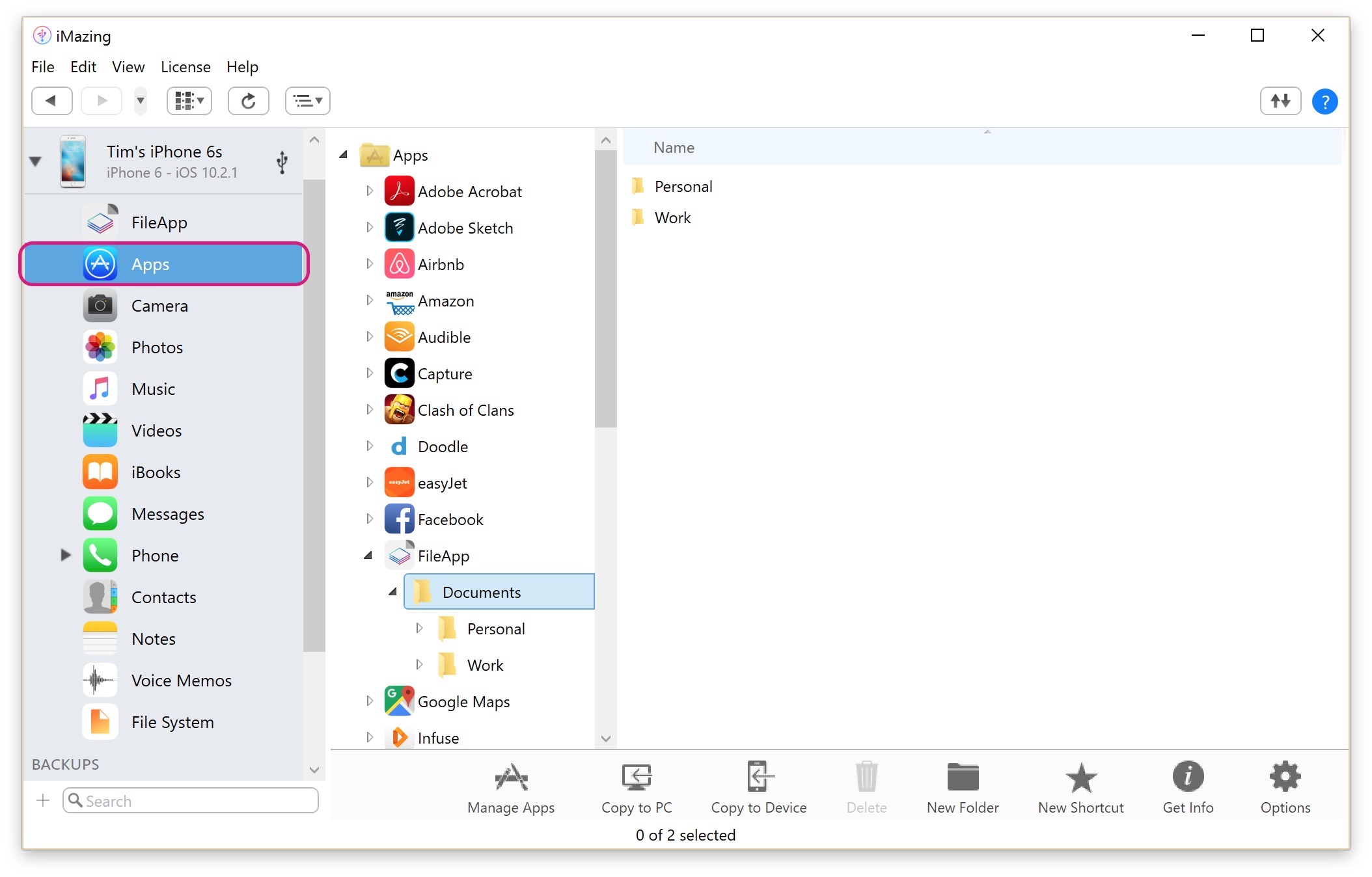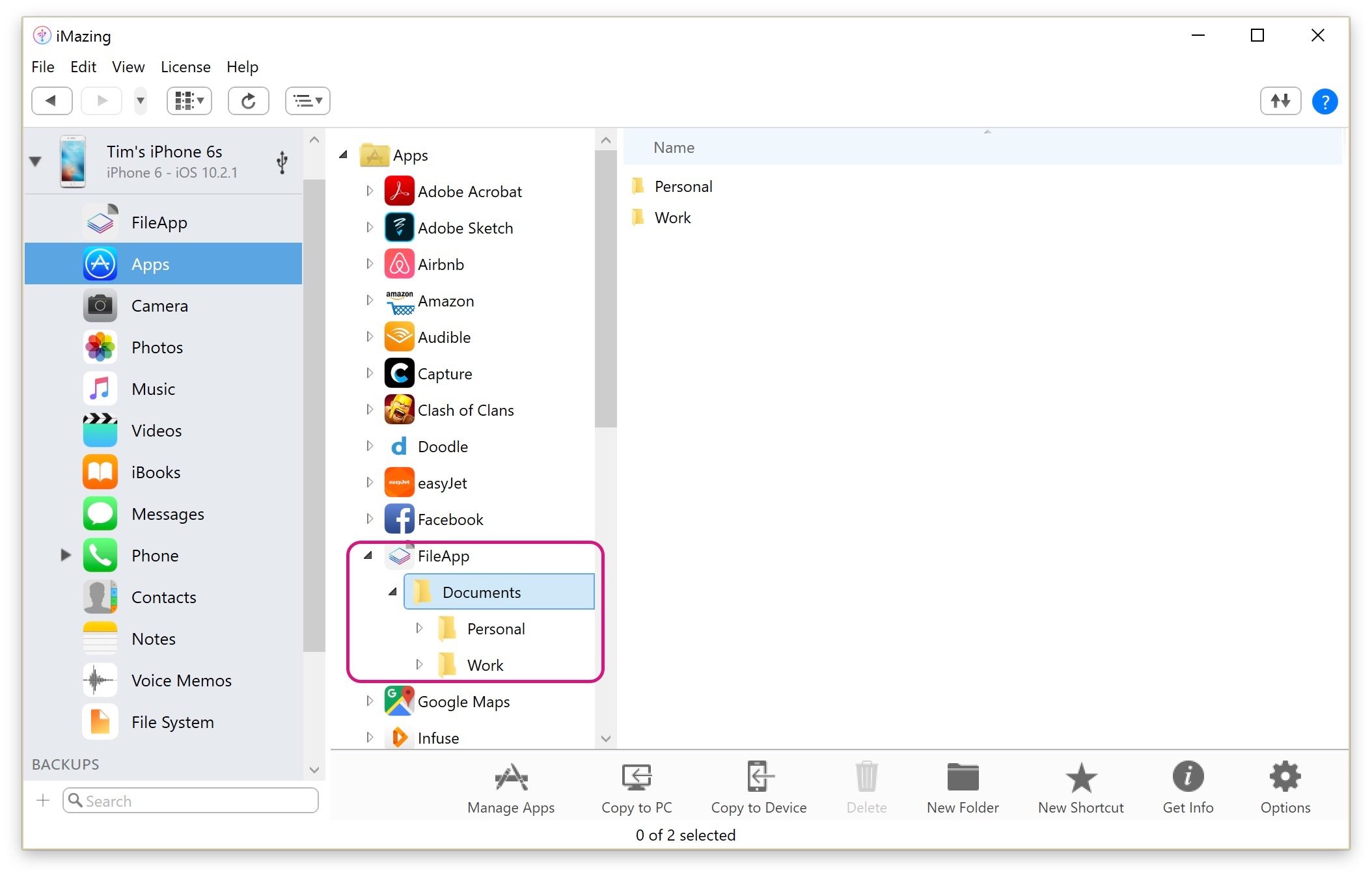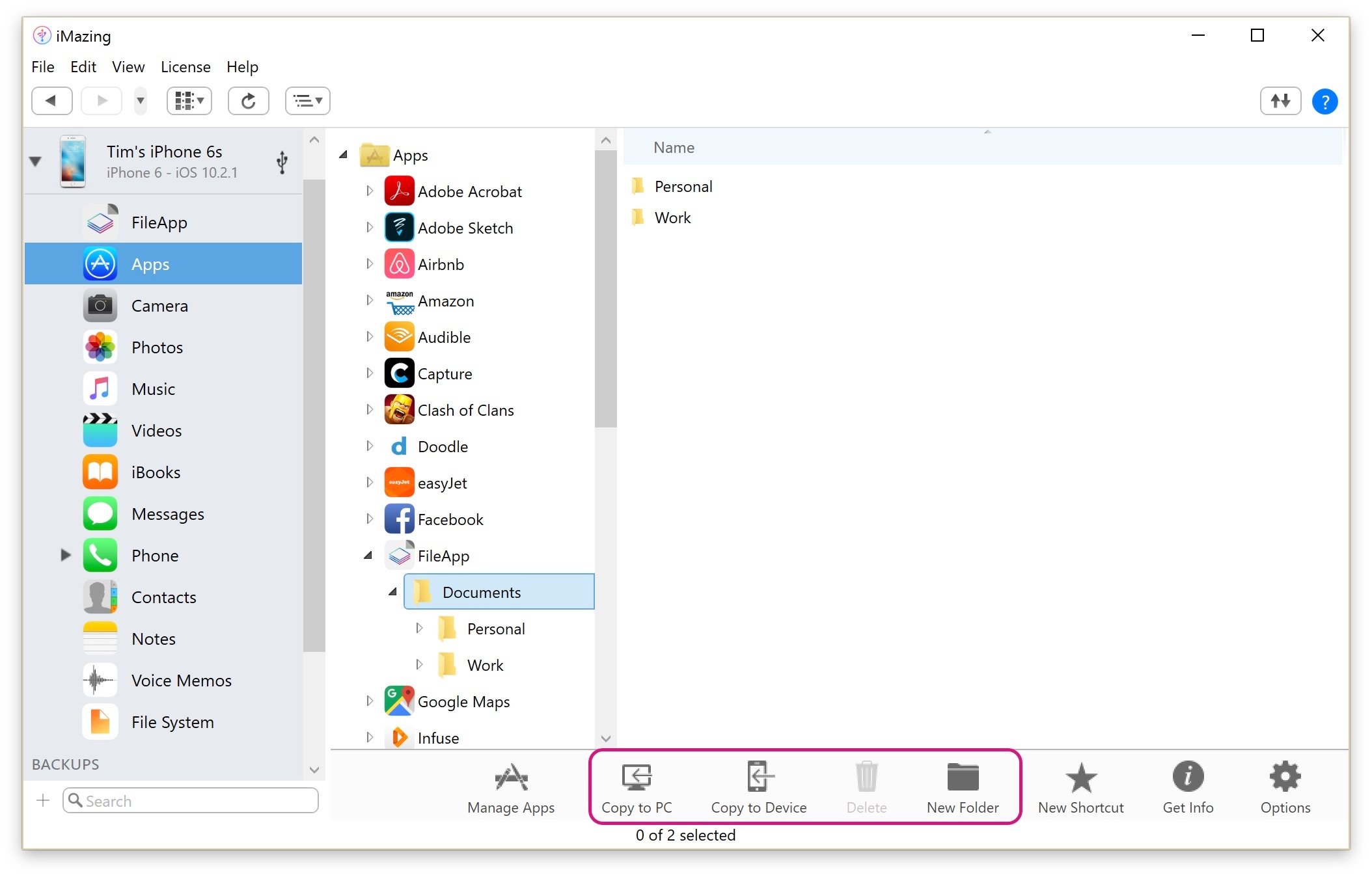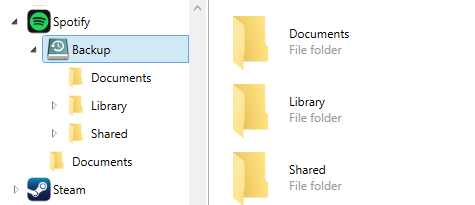Files & Data Transfer
Transfer files and folders to an iPhone or iPad App from a Mac or PC

💡iMazing 3
This guide is for the legacy iMazing version 2. For information on version 3, please visit this page.
iPhone, iPad and iPod touch do not have centralised file systems. Instead, each app has its own folder called sandbox. An app's sandbox is not shared with other apps, and is not accessible from a computer.
However, some iOS apps let you access their sandbox's Documents folder. These are referred to as File Sharing enabled apps. Simply put, these apps let you browse, upload and download files in their Documents folder.
iTunes provides a limited and simplistic interface to add, copy, or delete files from file sharing enabled apps.
iMazing provides a much more full featured way of interacting with file sharing enabled apps, via USB or Wi-Fi. It greatly expands on what is possible with iTunes:
- Browse and transfer folder hierarchy
- Preview files
- Rename files and folders
- Display items in multiple view types (list, icons, columns)
- Sort files by name, date, size, or kind
- List all ongoing transfer operations
All file sharing enabled apps are not created equal. What app is right for you will greatly depend on the type of document you want to use it with. In this guide, we use FileApp, but the instructions below apply to any file sharing enabled apps such as VLC or Kindle.
Have a look at the Going Further section at the end of this article for a list of our favorite compatible apps.
Who is this guide for?
Anyone who wants to easily and quickly copy files back and forth between their Mac or PC computer to their iPhone, iPad or iPod without iTunes.
Before you begin
Download and install iMazing on your Mac or PC computer.
Instructions
To transfer files from a Mac or PC computer to an iPhone, iPad or iPod touch:
- Launch iMazing and connect your device.
- In the left sidebar, select Apps.To see your most recent data, you may need to refresh your view.

- In iMazing's main window, select your application and navigate to its Documents folder.

- In the bottom toolbar, click one of the action buttons of your choice:

- Copy to Mac/PC – transfer files to your Mac or PC computer.
- Copy to Device – transfer files to your iPhone, iPad or iPod touch.
- Delete – delete files from your iPhone, iPad or iPod touch.
- New Folder – create a new folder on your iPhone, iPad or iPod touch.
💡 Tips:
- You can drag and drop files and folders from the Documents folder to your computer, and vice versa.
- To quickly access your favorite apps, add them as a shortcut
Backup Folder
If you've backed up your device, you'll notice that you have a Backup folder in addition to the app's Documents folder.
In this folder you can browse backed up app files from the backup folder, even if the app is not sharing enabled. This is a great way to access data that is usually hidden, and find out precisely which files are included in your backups.

What to keep in mind
Not all apps support file sharing; it's up to the app's developer to enable file sharing.
You can filter out apps which are not compatible with file sharing: click Options in the bottom toolbar, and select Only show sharing enabled apps.

You can also check whether or not an app is file sharing enabled by looking at the icon of its Documents folder.
The Kindle iOS app, enables file sharing: it's Documents folder is accessible.

The Spotify iOS app, does not have file sharing enabled: its Documents folder is not accessible.

If your device is running iOS 8.2 or below, the sandbox of all applications is fully accessible. To protect user privacy, Apple disabled this in iOS 8.3.
Going further
Some of our favorite File Sharing apps are:
| App | Price | Description |
|---|---|---|
| AudioShare | $4.99 | An audio file manager. |
| Documents | free | An easy, beautiful, and free FileManager by our friends Readdle |
| GoodReader | $4.99 | One of the most popular iOS file managers. |
| Infuse | free / $9.99 (Pro) | Best video player around |
| Kindle | free | Great for PDFs and ebooks |
| VLC | free | The most popular video player |
- To learn more about interaction with files in the Apps view, see our guide on File Browsing.
- To learn more about how work iOS file system concepts and app sandboxes:
How to access your iPhone App's data and files.




